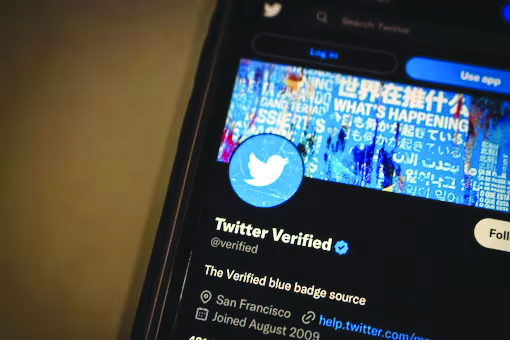
How Worrying Over Blue Ticks Has Exposed the Shallowness of Our Social Elites

There is a certain image that has been doing the rounds on Indian Twitter for a while now. It purports to show a license of some kind, apparently called a “Kursi Nashin” issued in Delhi in 1887. It is made out to one “Ram Narain, son of Sheo Parshad” and entitles him to sit down when in front of government officials. While I cannot verify this document independently, it sounds exactly like something the British would do. Secure the loyalty of people, especially the elites, by allowing them to feel important in petty, meaningless ways.
It may seem funny today. How could social elites of that time, all grown-ups, have cared so much for something so small? But is it really such a mystery? As a symbol of social status, how different is the “Kursi Nashin” of 1887 from the blue tick on Twitter, today?
Until last year, only certain special people, chosen by an inner circle of Twitter executives, could have one. Then Elon Musk took over and said everyone who wanted a blue tick would have to pay for one. When many people were too proud to pay, he took their blue checkmarks away. A couple of days later, he restored some of them. Perhaps for the accounts with millions of followers. Perhaps just to troll them. I don’t know. Elon deserves to have his $44 billion worth of fun. And now everyone is worrying over whether they can get a free check mark, whether to pay for one, whether people will come to know if they did, and whether a paid blue tick would have the same prestige as the legacy one. Not just in India, but all over the world. Over 100 years after 1887, intellectual shallowness is exactly the same.
Whether they admit it or not, we have just seen a fascinating social experiment. And there are many lessons here. The first is that people are willing to support any system as long as they are made to believe that they can feel just a little more special than others. The British used to do this with titles such as “Rai Bahadur” and “Khan Bahadur.” Or allowing them to dress up like an Englishman to attend the grand durbar of King George V in Delhi. You should look up the old albums of some famous families that claim to have fought for India’s freedom.
Remember that when social media came around, the number one worry among the elites was that it had made the playing field level. Would the opinion of someone with a degree in Journalism, or English, from Oxford for instance, be placed at the same level as someone with just an internet connection? Or in their words, a troll. Or in India, the Internet Hindus. Back in the day, even Al Jazeera did a show about the dangers posed by them. With time, the words they use to show their contempt for fellow Indians have changed. Now the term “WhatsApp University” has caught on. Even if the elites themselves cannot tell the difference between a spam email and a job offer from Harvard.But then, the social media companies agreed to play ball with the social elites. They could have a little blue tick next to their names. Of course, as with any major change, a handful of new elites were created as well. But for the most part, they could transfer the social hierarchy as it was, from the old public square to the new one on the internet. Even more importantly, the social media companies agreed to police speech on terms set by the old elite. They were back as gatekeepers. If they wanted to get rid of someone for “hate speech”, they could. If they wanted to elevate someone as an “activist”, they could do that too.The second lesson from this massive social experiment is just how far people will go to justify their little status markers to the world. With the blue ticks gone, they worry. How can the masses now be sure that they are getting their information from the high and mighty? Now anyone can spread ‘misinformation.’